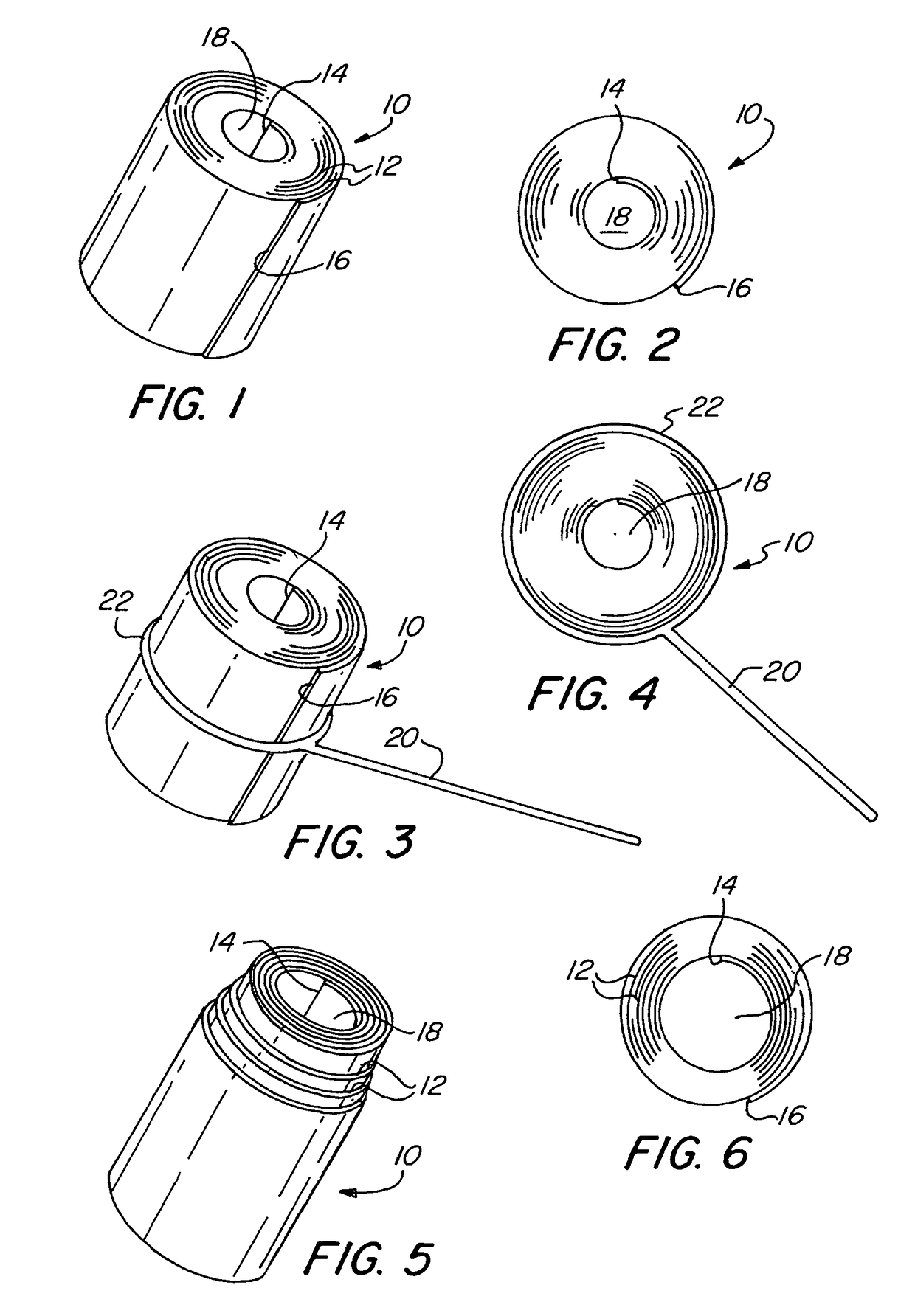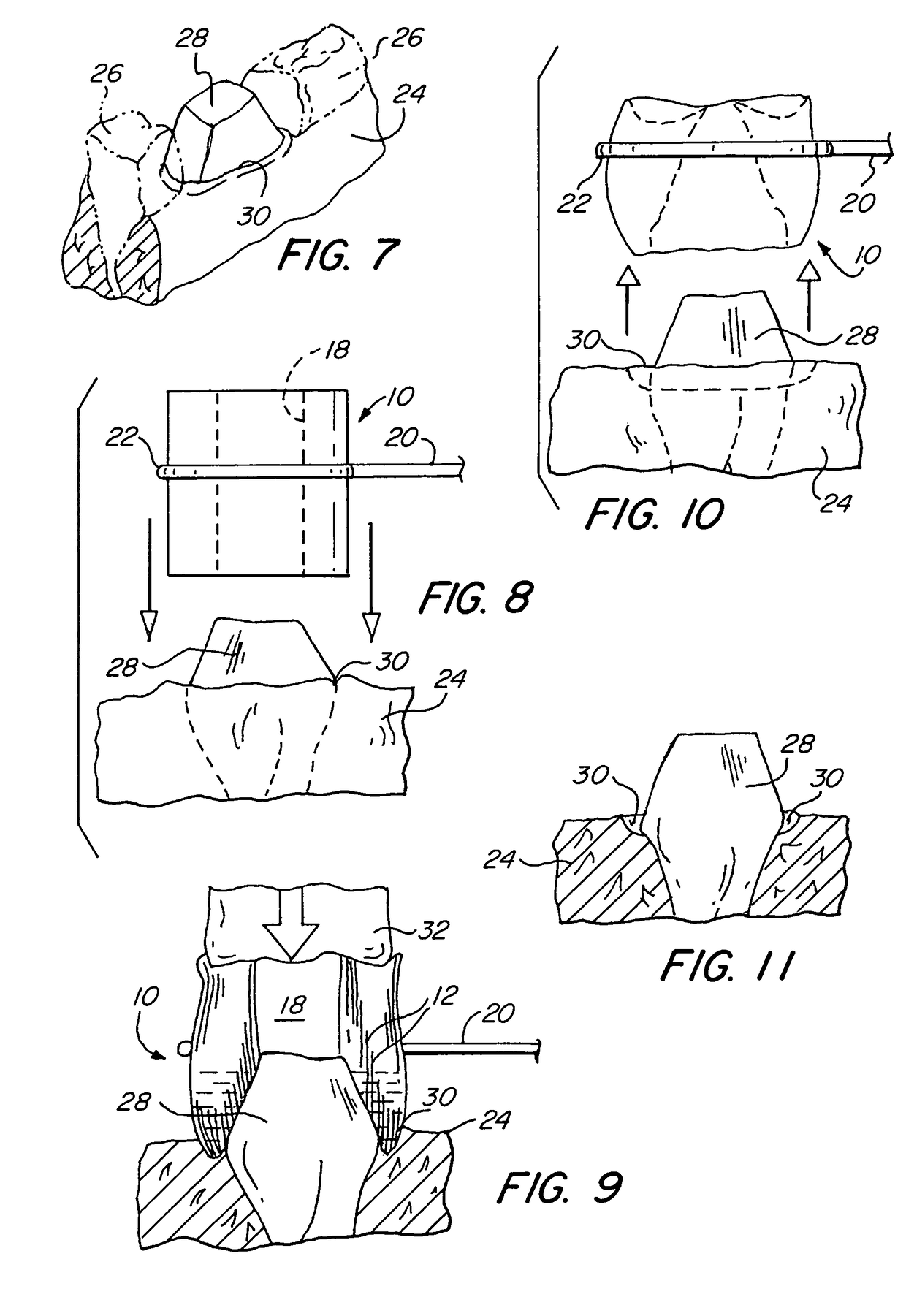Conforming gingiva retraction compression cap and method of retracting tissue around a tooth
a compression cap and tissue technology, applied in the field of tissue retraction, can solve the problems of pain or extreme discomfort for patients, inability to make impressions of prepared teeth, and inability to accurately take impressions, etc., to facilitate the formation or widening of a gingival sulcus, easy and inexpensive manufacturing
- Summary
- Abstract
- Description
- Claims
- Application Information
AI Technical Summary
Benefits of technology
Problems solved by technology
Method used
Image
Examples
Embodiment Construction
[0034]FIG. 1 is a perspective view illustrating an embodiment of the present invention. The rolled compression cap 10 is formed by rolling sheet material, such as absorbent paper or cloth or the like, forming wound, spiral, or concentric layers 12. The rolled compression cap 10 has an inner end 14 and an outer end 16. A central bore 18 is formed. The rolled sheet material or paper may be selected so as to have sufficient rigidity to transmit pressure, yet be sufficiently soft or compliant so as not to injure the gingival. The rolled sheet material or paper should also be absorbent so as to absorb fluids from the formed gingival sulcus.
[0035]FIG. 2 is a plan or top view illustrating the rolled compression cap 10 illustrated in FIG. 1. The rolled compression cap 10 is preferable made of an absorbent paper-type material and is rolled around the longitudinal axis of the bore 18. The rolled sheet material forming the layers 12 should be relatively rigid so as to be capable of applying pr...
PUM
 Login to View More
Login to View More Abstract
Description
Claims
Application Information
 Login to View More
Login to View More - R&D
- Intellectual Property
- Life Sciences
- Materials
- Tech Scout
- Unparalleled Data Quality
- Higher Quality Content
- 60% Fewer Hallucinations
Browse by: Latest US Patents, China's latest patents, Technical Efficacy Thesaurus, Application Domain, Technology Topic, Popular Technical Reports.
© 2025 PatSnap. All rights reserved.Legal|Privacy policy|Modern Slavery Act Transparency Statement|Sitemap|About US| Contact US: help@patsnap.com



